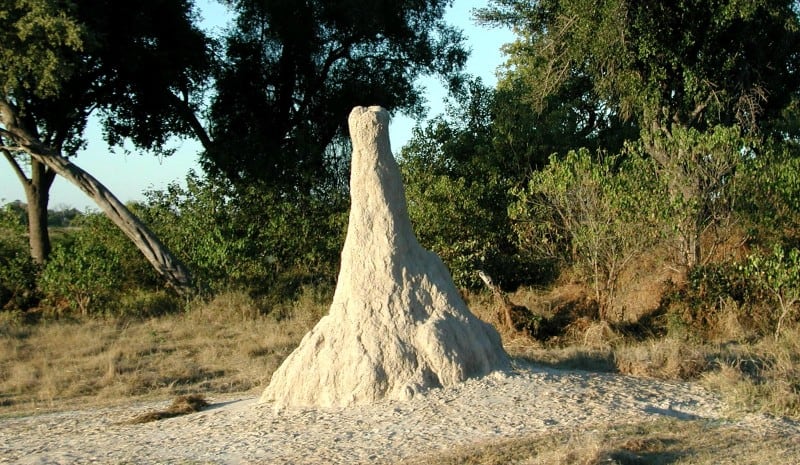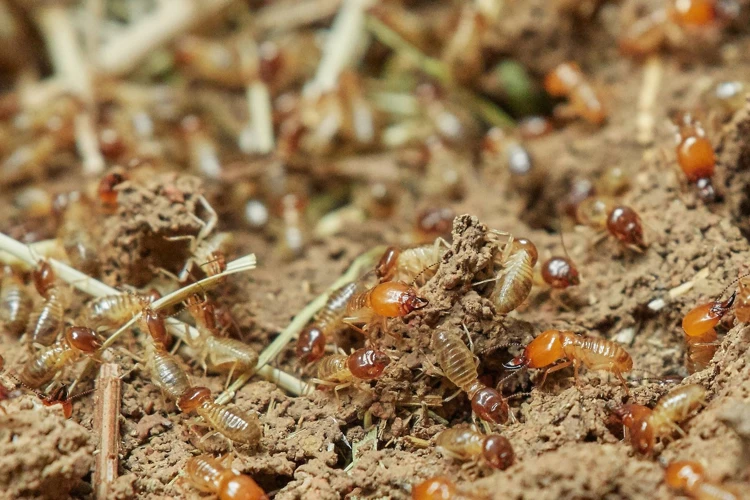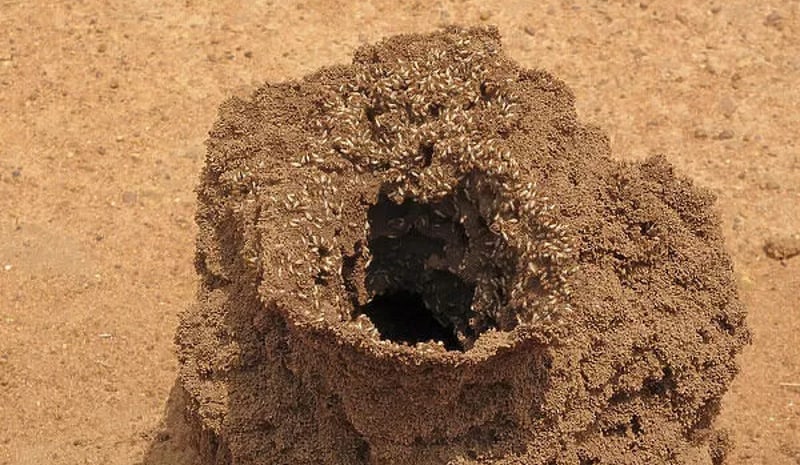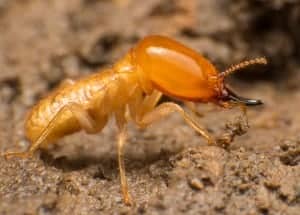The Role of Termites in Ecosystem
Termites may be small, but they play a vital role in maintaining ecological balance in various habitats. These tiny insects have adapted to different environments, from rainforests to deserts, and have become an integral part of the food web and overall ecosystem. Throughout this article, we will explore the various roles termites play in the environment, including their function as decomposers, their impact on nutrient recycling and soil aeration, and their importance as a food source for other organisms. Additionally, we will discuss how termites contribute to forest health and the potential consequences of human activities on their ecological role. By the end of this article, you will have a better understanding of the intricate relationship between termites and the environment.

Termites as Decomposers
Termites are known for their role as decomposers in the ecosystem, which involves the breaking down of dead materials and waste products to release nutrients back into the environment. Termites accomplish this through their ability to digest cellulose, the main component of plant cell walls, with the help of specialized microorganisms living in their digestive tract. This unique ability makes termites an important contributor to nutrient cycling.
Termites break down dead materials by consuming them and breaking them into small pieces. These pieces are then further broken down by the microorganisms living in the termite’s gut. During this process, nutrients such as carbon, nitrogen, and phosphorus are released and can then be used by other plants and animals in the ecosystem. It’s estimated that termites are responsible for recycling 5-15% of the world’s total biomass.
It’s important to note that not all termite species are decomposers. Some species primarily consume live plant material or feed on the wood of living trees. For example, subterranean termites feed on damp wood and are known to cause damage to wooden structures and furniture. Knowing the physical characteristics of termites and being able to identify signs of termite infestation can help prevent costly damage to homes and other wooden structures.
Nutrient Recycling
Termites play a crucial role in nutrient recycling in the ecosystem. Termites break down complex organic compounds found in wood and plant matter, releasing essential nutrients back into the soil. This process is essential for the growth of plants and other organisms in the ecosystem.
Nutrient recycling carried out by termites is a complex process that involves:
- Feeding: Worker termites ingest wood and plant matter, which contain various nutrients like nitrogen, phosphorus, and potassium.
- Digestion: Termites have a unique digestion process. They have microbes in their gut that break down the complex compounds into simpler compounds, which are easily absorbed by the termites.
- Excretion: After digestion, termites excrete partially digested plant matter, known as “frass.” Frass contains essential nutrients that are already processed and easily available for plants and other organisms in the ecosystem.
Termites also help to maintain soil fertility. They release large amounts of nitrogen into the soil through their excrement, which is vital for plant growth. The recycling of organic matter by termites is a crucial aspect of the ecological system, as it ensures all the nutrients are continuously available for plants and other organisms to grow and thrive.
Termites are a crucial part of the ecosystem, essential to nutrient recycling and keeping the soil fertile. Without them, the ecosystem may struggle to thrive. This is why it’s essential to understand and protect termite populations. If you want to learn more about termites, check out our article on subterranean termite mating and behavior!
Soil Aeration
Soil aeration plays a crucial role in the ecosystem, and termites have a significant impact on this process. As termites burrow through the soil, they create tunnels that allow air to circulate, keeping the soil loose and porous. This allows plant roots to grow more efficiently and absorb essential nutrients and water.
Additionally, termites’ feeding habits improve soil aeration. As they consume dead wood and other organic material, they break down the soil, creating channels that improve water and nutrient infiltration. This, in turn, promotes healthier soil and plant growth.
A study conducted in India found that the presence of termites in agricultural fields increased soil porosity by up to 28% compared to fields without termite activity. This highlights the essential role that termites play in the soil’s overall health and vitality.
It’s worth noting that not all termite species contribute to soil aeration in the same way. Some species, such as subterranean termites, burrow deeper into the soil, creating larger tunnels that promote deeper aeration. Others, such as drywood termites, create smaller, more localized tunnels and don’t have as significant an impact on soil health.
Termites as a Food Source

The idea of consuming insects may evoke a sense of disgust for some, while for others, it is a normal part of their diet. Among the many insects that humans consume, termites are considered a delicacy in some cultures. It might be perplexing to think of these wood-devouring insects as a potential food source, but their nutritional value cannot be easily dismissed. Let’s explore the various creatures that view termites as a source of sustenance.
For Other Insects
Termites play an essential role in providing food for other insects in the ecosystem. They serve as a primary food source for a variety of predators, including ants, birds, and reptiles. The high protein and nutrient content of termites make them a valuable source of sustenance for other insects, especially those that cannot digest cellulose on their own. Here are some of the insects that rely on termites for survival:
- Ants: Ants are among the primary predators of termites and are known to raid termite colonies to capture and feed on them. In fact, certain ant species have evolved a symbiotic relationship with termites, where they protect the termite colony in exchange for a steady supply of food.
- Beetles: Certain species of beetles, such as darkling beetles, rely on termites as a primary food source. These beetles are known to feed on both live termites and termite eggs.
- Centipedes: Centipedes are carnivorous and feed on a variety of insects, including termites. They are particularly adept at hunting termites because of their speed and agility, which enables them to capture their prey with ease.
- Spiders: Spiders are also known to prey on termites. Some species of spider build their webs near termite nests, where they can easily take advantage of the steady supply of food.
For Vertebrates
Termites not only play an important role in the ecosystem as decomposers and nutrient recyclers but also serve as a vital food source for a variety of animals. One group of animals that heavily relies on termites for sustenance is vertebrates, including birds, reptiles, and mammals.
Some of the vertebrates that feed on termites include:
| Animal | Description |
|---|---|
| Anteaters | These mammals are specifically adapted to feed on ants and termites, using their long tongues to extract them from their nests and mounds. |
| Aardvarks | These nocturnal mammals have powerful claws for digging into termite mounds and ant nests to feed on the insects inside. |
| Pangolins | These unique mammals are covered in scales and use their long tongues to gather termites and ants from their nests. |
| Armadillos | These mammals, found in the Americas, rely on termites as a significant part of their diet and use their strong sense of smell to locate termite nests. |
In addition to these specialized termite feeders, other animals also consume termites opportunistically. For example, some bird species such as roadrunners and woodpeckers will forage termites when other food sources are scarce. Similarly, reptiles like monitor lizards and skinks may consume termites as a part of their diet.
It is important to note that the removal of termites from the ecosystem can have a ripple effect on the food web and potentially harm vertebrate populations that rely on them as a food source. It is crucial to understand and appreciate the role of termites in our ecosystem and strive to preserve their populations.
Termites and Forests
Intricately interwoven within forest ecosystems are fascinating creatures that are vastly underrated for their ecological significance. These tiny architects are responsible for building vast underground networks that support forests around the world. Surprisingly, they are not beavers, but rather termites. These industrious creatures are largely responsible for the health and sustainability of forests. So, let’s delve deep into the remarkable role of termites in maintaining healthy forests.
Effects on Tree Growth and Forest Restoration
Termites play an important role in the growth of trees and the restoration of forests. They break down tough plant materials and turn them into nutrients that trees can use to thrive. Additionally, termites are known to improve soil structure and fertility, which also contribute to tree growth. In fact, some studies have found that areas populated with termites have higher plant diversity and abundance.
Here are some specific effects of termites on tree growth and forest restoration:
- Termites help to create channels in the soil for water to flow through, allowing tree roots to access water more easily. This is particularly important in areas with lower rainfall, as termites can help to prevent drought stress in trees.
- Termites increase nutrient availability in soils by breaking down tough plant materials, such as cellulose and lignin, into simpler compounds that are easier for trees to absorb. This allows trees to grow more quickly and to produce larger amounts of biomass.
- Termites can help to prevent nutrient imbalances in soils, as they are able to selectively target and break down certain plant materials that contain high concentrations of specific nutrients. For example, some termites are known to preferentially consume wood that contains high amounts of nitrogen, which can help to prevent nitrogen from becoming limiting in the soil.
- Termites can improve soil structure by creating tunnels and burrows that allow for better water infiltration and air circulation. This can help tree roots to grow more deeply into the soil, which can improve stability and nutrient uptake.
All of these effects have important implications for forest restoration efforts. By enhancing soil fertility, improving water availability, and creating a more hospitable environment for tree growth, termites can help to speed up the process of reforestation in areas that have been degraded or deforested. It’s important to note, however, that the specific effects of termites on tree growth and forest restoration can vary depending on factors such as soil type, climate, and the composition of the local termite community. Further research is needed to fully understand the complex relationships between termites, trees, and ecosystems.
Prevention of Soil Erosion

Termites play a vital role in preventing soil erosion. Soil erosion occurs when the top layer of fertile soil is eroded due to various natural factors like water, wind, and human activities such as deforestation and construction. Soil erosion poses a severe threat to the health of the ecosystem as it decreases the fertility of the soil, leading to a loss of biodiversity and a decline in agricultural productivity. However, termites can mitigate soil erosion by building their nests and tunnels that create a network of stable, interconnected soil particles that resist erosion.
Creating a Buffer against Water Flow
Termites can create a buffer against water flow, which helps prevent soil erosion. This is especially important in areas with a high rainfall or flood-prone regions. Termites build their nest with a system of channels and interconnected tunnels and mounds that can absorb and slow the flow of water, reducing soil erosion.
Protection Against Wind Erosion
Termites can also help prevent wind erosion of soil. Wind erodes soil by blowing away the topsoil particles, which can lead to soil degradation and desertification. However, termites help to bind the soil particles together, making the soil more resistant to wind erosion.
The Impact of Human Activities on Termite-Mediated Soil Erosion Control
Human activities like deforestation and urbanization can disrupt or change the natural ecosystems, which can lead to a loss of termite populations. The loss of termite populations can severely impact the soil’s ability to resist erosion, leading to increased soil erosion. It is essential to conserve natural ecosystems and protect them from degradation and human intervention.
Conclusion
In conclusion, it is clear that termites play a vital role in ecosystem balance. As decomposers, they break down dead plant matter and contribute to nutrient recycling, which supports the growth of plants. Their activities also aerate the soil, creating better growing conditions for vegetation. As a food source, termites are essential for the survival of many other insect and vertebrate species.
Termites are also linked to the health of forests, with their burrowing activities helping to prevent soil erosion and promoting tree growth. However, humans have had a significant impact on termite populations, particularly through the deforestation of natural habitats. This has disrupted the delicate balance of ecosystems and the indigenous communities that rely on them.
It is crucial that we recognize the importance of termites and take steps to protect their ecological role. This includes preserving natural habitats and avoiding the use of harmful pesticides that can destroy termite populations. By working to support the role of termites in the ecosystem, we can ensure a healthy and sustainable future for all living creatures on our planet.
Frequently Asked Questions
How do termites contribute to nutrient recycling?
Termites play an important role in nutrient cycling by breaking down dead plant material into nutrient-rich soil. Their digestive system is specifically designed to break down cellulose, which allows them to convert wood and dead plants into nutrients for other organisms.
What is the significance of termites as decomposers?
Termites are essential decomposers in many ecosystems as they help to break down organic matter like dead trees, fallen leaves, and grasses. This process of decomposition releases nutrients back into the earth which supports the growth of new plants and sustains other organisms in the ecosystem.
How do termites aerate soil?
Termites aerate soil through their tunnelling activities. They create networks of underground tunnels and galleries, which allows for better water penetration and circulation of air into the soil. This aeration process enhances soil fertility and improves conditions for the growth of plants.
What are the potential benefits of termites as a food source?
Termites are an excellent source of protein and fat which makes them a valuable food source for other insects and animals. They are low in cholesterol and high in nutrients and can even serve as a sustainable food source for humans in some cultures.
What animals typically feed on termites?
Termites are a crucial food source for many animals, both large and small. Anteaters, aardvarks, echidnas, and armadillos all feed on termites. Birds like woodpeckers, kingfishers, and hoopoes are also known to eat them.
What is the impact of termites on forests?
Termites play a key role in the ecosystem of forests. They help to maintain healthy soil, prevent soil erosion and contribute to nutrient cycling. In some cases, termites can also have a negative impact on the growth of trees through excessive feeding on tree bark and other plant material.
How can termites prevent soil erosion?
Termites can prevent soil erosion by building a network of tunnels and galleries underground. This creates a more stable and structured soil environment that is better suited for planting and growth. The soil is held together more firmly, which minimizes the risk of soil erosion due to wind or water runoff.
What are the effects of deforestation on termite populations?
Deforestation can have a significant impact on termite populations as it can disrupt their natural habitats and food sources. Termites are also highly dependent on tree roots for moisture and nutrients, which can be difficult to obtain in deforested areas. This disruption can lead to a decline in termite populations, which in turn can have negative effects on the ecosystem as a whole.
How does disruption of indigenous communities affect termite ecology?
Termites often play an important role in the traditional cultures of indigenous communities who rely on them as a food source or as a form of natural medicine. Disrupting these communities and their traditional practices can lead to the loss of valuable knowledge about termites and their role in the ecosystem.
Can termites cause damage to homes and buildings?
Some termite species can cause severe damage to wooden structures like homes and buildings. They feed on wood and other cellulose-rich materials, which can weaken the structural integrity of buildings over time. Homeowners should be aware of the signs of termite infestations and take measures to prevent them.

